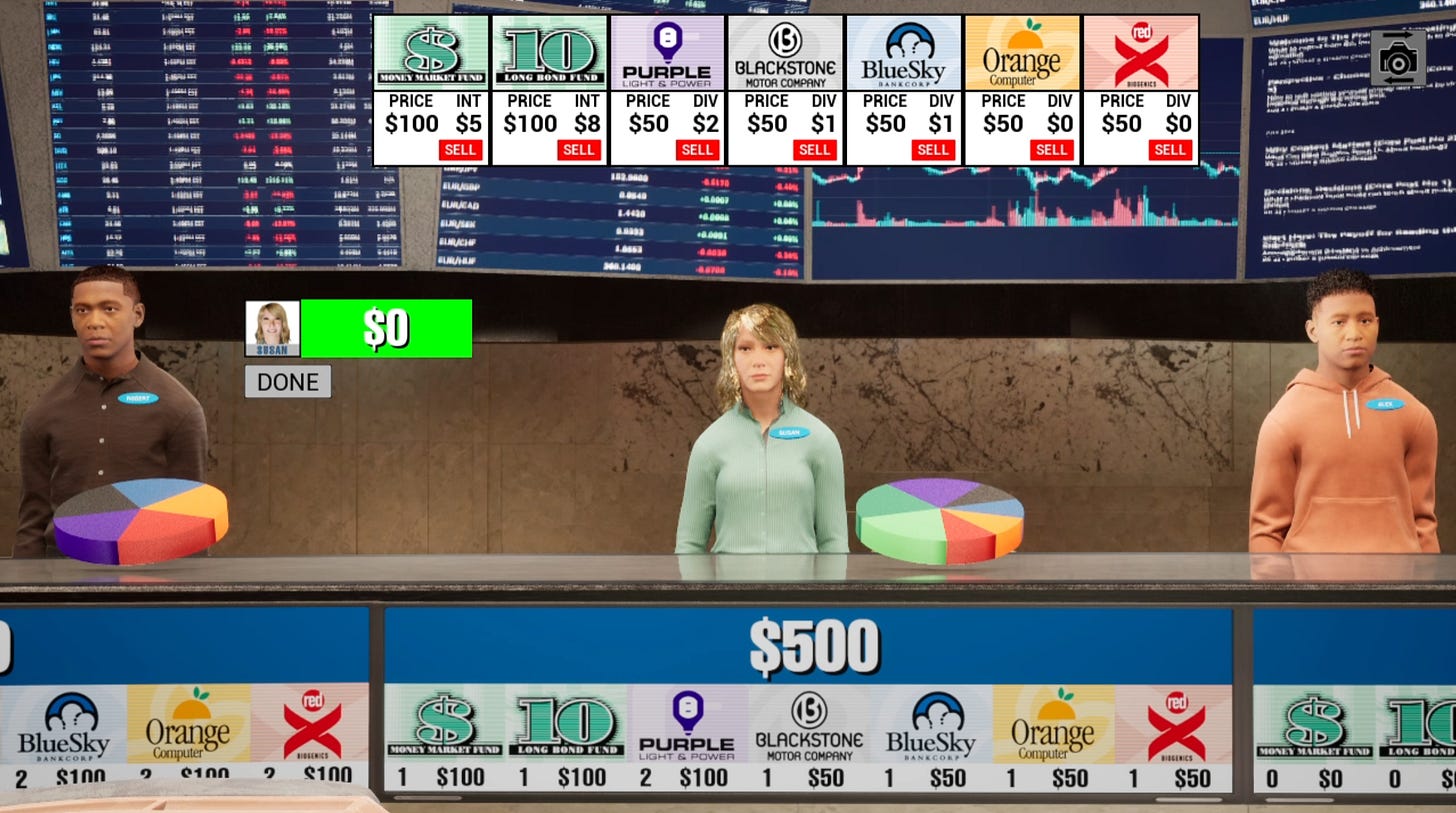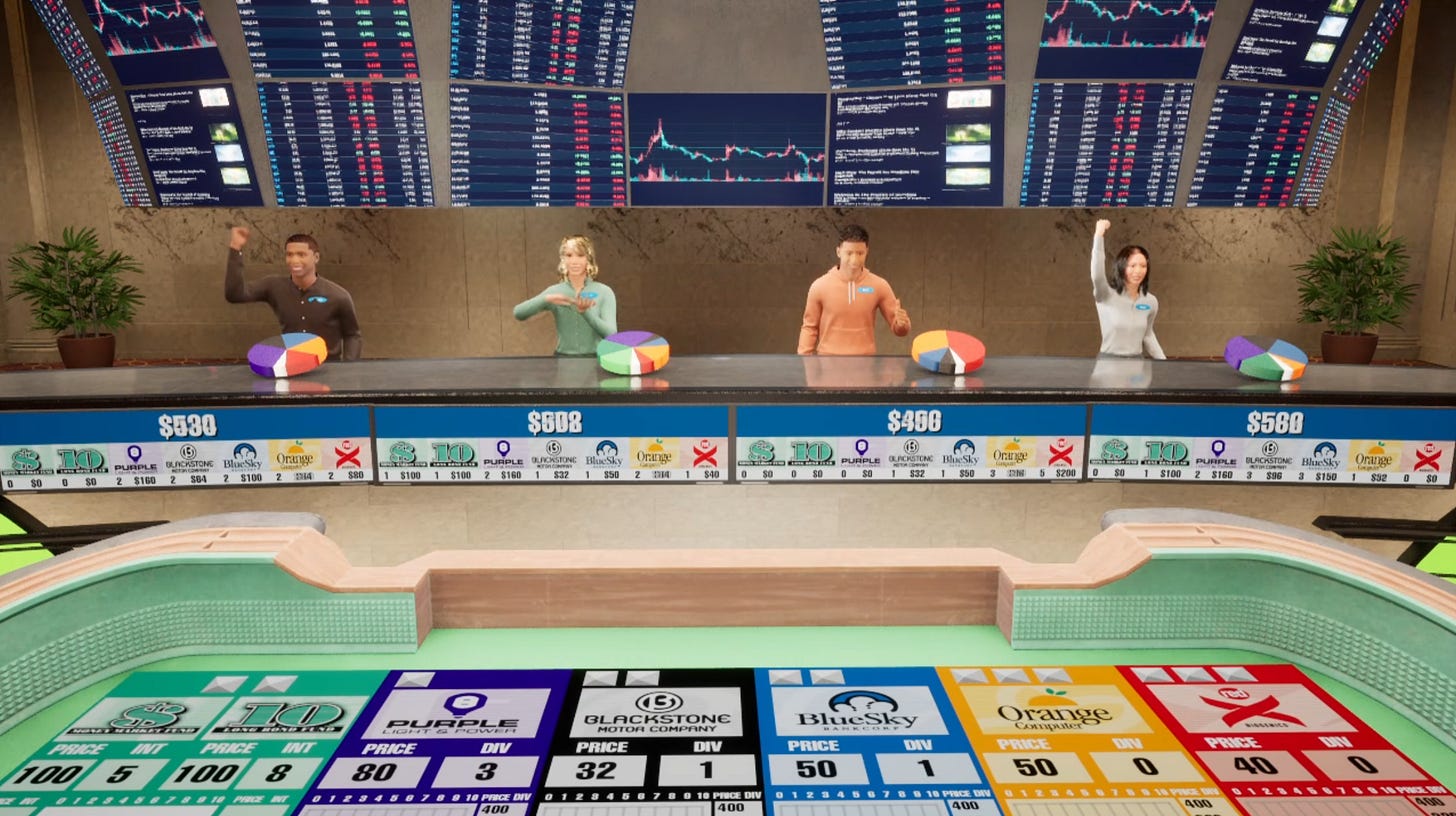Introducing our Interactive Portfolios Investment Simulation
Spread the word: Teachers can now help students get practice reps in investing without needing to be investment experts themselves.
In the book we are currently writing—The Practice of Investing—there are four sections: Knowledge, which covers the core concepts of investing; Process, which describes how to put a portfolio together; Mindset, which covers the psychology of investing; and Experience, which explains how investment simulations help to clarify how investment decisions play out over time.
Our Portfolios Investment Simulation game is an example of a simulated experience.
Players (divided into 4 teams) manage a portfolio of Stocks, Bonds, and a Money Market Fund over a simulated 10-year investment period. It’s practice reps for investing.
We have run in-person Portfolios sessions with students and adults for years.
The sessions can tend to get a bit loud—especially when we’re rolling dice to simulate changes in interest rates and the prices of the stocks in the game. Participants become fully engaged in the interactive learning experience. We call it competitive learning.
Most importantly, participants remember the game and the lessons learned long after (sometimes years after) they have played. And, we know that it has inspired many participants to start investing or to review their current investments with a higher degree of understanding and confidence.
Our biggest challenge has been in finding a way to impact more people. We did attempt to train teachers to use the game in class but that didn’t work. It is a highly dynamic game and requires a deep understanding of investing in order to present it properly.
Interactive Portfolios Program
We have finally found a solution to this challenge. We have used a program called Unreal Engine (used in many high-end video games and movies, etc.) to create a fully interactive version of the game that is accessible via streaming on any computer with a sufficiently strong Wi-Fi connection.
Our primary audience for this version of the program is high school and university students.
A teacher will divide their class into four teams and designate a captain for each team.
Each team chooses a meta human avatar to represent their team in the game. All the teacher needs to do is enter each team’s decisions (which investments to buy and sell, etc.) and the program does the rest.
The teacher does not need to be an expert in investing. Many teachers tell us they learn as much from the game as their students do.
Getting the Word Out
Our goal now is to get the word out so we can impact as many students as possible.
It is our belief that, while all aspects of financial education are important, investing is the area with the opportunity to make the largest—literally, life-changing—difference.
Unfortunately, while most people agree on the importance of financial education in schools, it simply doesn’t get the same attention as other core subjects.
Moreover, the financial literacy resources provided to schools (often paid for by well-meaning sponsors) are simply not good enough—especially in the area of investment education.
The interactive Portfolios program—and the interactive Investment Roulette program we mentioned in our post Takeaways from Our Interactive Investment Roulette Game—can help change that.
We teach the right things in a highly engaging manner that will have a real and meaningful impact on the future financial well-being of students who participate in the programs.
So, if you know a teacher or professor who might be interested, please have them contact us at scrickmer@gmail.com.
For schools in the Greater Cincinnati area, we can likely include them under the sponsorship we have from existing sponsors.
Best regards,
Stuart & Sharon







I thought the investment game was good but they could improve the graphics. The lessons and final outcome were all good.